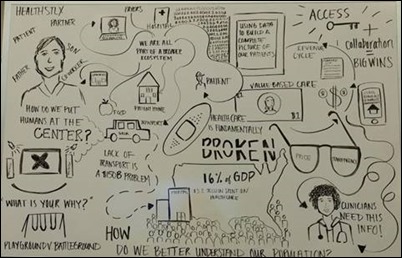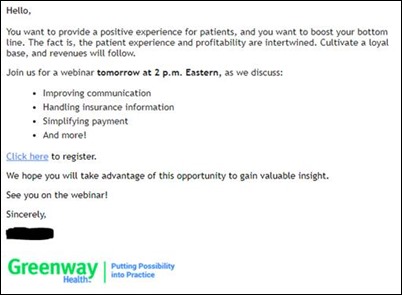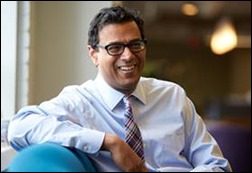Curbside Consult with Dr. Jayne 11/26/18
While many people were out doing their Black Friday shopping, I was getting clobbered at urgent care. We saw over 1,000 patients across our locations, which is similar to the patient counts that we see during the height of influenza season.
Many of the patients were coming in for fairly low-acuity problems because their primary care physicians’ offices were closed and they were concerned that their conditions would worsen over the weekend. A portion of the patients had issues that had gotten worse over the holiday, while others had holiday-related injuries.
I saw some Thanksgiving-related injuries, including a patient who was injured by a frozen turkey that fell on her, allowing me to use the ICD codes W61.42 “Struck by turkey” and Y93.G1 “Activity, food preparation and clean up.” Another injured her finger “spiralizing” a sweet potato. I couldn’t find a better code for that other than the usual wound codes, but the turkey incident was a challenge for my scribe.
It’s rough enough seeing that large volume of patients (more than 70 of them were on my schedule) but it was made more difficult by an EHR that behaved erratically. I’m pretty sure my EHR has the world’s most user-unfriendly error codes, such as, “The length argument value must be greater or equal to X” and “Error attempting to push run time parameters onto the stack.” Both of those gems allowed the user to click through without incident and allowed return of normal function, so it’s not clear why we were even seeing them. Although I’ve been in the healthcare IT world for a long time and have come to terms with just clicking through and not getting too worked up, some of my staff members were very frustrated by messages that had no meaning.
Due to increasing co-pays and concerns about crowding at the emergency room, we had multiple patients who ultimately needed transfer to a higher level of care, which can be stressful for the staff. Most of the team I worked with have been in the urgent care space a long time, so they weren’t nervous about handling patients with stroke or chest pain symptoms until emergency medical services arrived to transport them to the hospital.
It’s still challenging, though, especially when your schedule gets backed up while you’re caring for a truly sick patient while other patients are popping out to the clinical station because they feel that they’ve been waiting too long. The consumer-style expectations of our patient population continue to rise, and on a busy day full of lacerations and hospital transfers, it’s definitely harder to meet those expectations. Patients are already frustrated because their primary care physicians’ officers are closed, assuming that they have a primary physician, which many do not.
We also had an uptick in patients who were presenting to us for care after being seen at a retail clinic. They had seen a nurse practitioner only to be told that their condition was outside the scope of practice permitted at the retail clinic and that they would need to be seen by a physician for laboratory work, chest x-rays, etc.
We’re happy to take those referrals, but the patients aren’t thrilled to pay an urgent care co-pay on top of whatever was spent at the retail clinic, not to mention the time involved in leaving one facility and traveling to another. The local retail clinics vary dramatically in how they screen patients for scope of practice. Some seem to do the screening upfront and refer the patient prior to any exam, where others see the patient and then refer. The latter doesn’t make for very happy patients.
One of the more challenging parts of my day was caring for a patient who came in with what appeared to be a viral illness but that turned out to be a life-altering diagnosis. In the urgent care trenches, we’re often accused of practicing defensive medicine or ordering too many tests, but when your CT scan detects a serious cancer that the patient had no idea was present, it’s sobering. I’m sure when Monday rolls around we’ll have to deal with the retroactive authorization for the test, but it will be worth it.
I hate having to tell patients about those discoveries. It would be so much better to have a physician who knows the patient give them the news. Patients are generally glad that they have a diagnosis and a plan to move forward, even if the news is not what they expected. I’ve had several situations like this over the last several weeks and I wish there was a way to follow along with the patient’s care. In our region, though, the big health systems aren’t about to share data with an independent urgent care even though their systems are allegedly interoperable.
Today was a much easier schedule and I had a couple of hours where patients only trickled through the door, so I was able to work on some informatics projects. We’ve been faced with shortages of some of our common medications, so I worked on an analysis of diagnosis patterns and volumes to estimate how long we can stretch our supplies. It’s still baffling that we have shortages of key medications in the US, including antibiotics and especially generics. We’re also low on influenza vaccine, so I worked on a strategy to predict demand and redistribute what we had. Not exactly high-powered informatics or big data analysis, but the run-of-the-mill data needs that are common for practices.
I also spent some time with one of our training scribes to talk about proposed changes to our scribe program since we have had to ramp up quickly to prepare for the opening of several new locations. We don’t want to shortchange any of the training, but want to make it as efficient as possible since scribes are the lifeblood of our high-volume days during flu season.
I had some time to play around with data around influenza and was glad to see that our influenza activity is paralleling the CDCs data at around 2 percent of the visit volume. It’s days like today that I’m glad to have an EHR and can extract data for useful purposes. In the coming weeks I’ll be extracting data for more challenging purposes, including our annual analysis of whether we should continue to opt out of the federal incentive programs. That’s a much bigger project, including analysis of provider workflow, documentation time, and click counts on top of the analysis of payer mix, CPT codes, quality measures, and more. It’s not exactly something I look forward to every year, but it’s rewarding to be able to analyze, interpret, and package the data so that informed decisions can be made.
We also had a tornado warning issued while seeing patients, which put our disaster planning skills to the test. There’s not a lot of patient privacy when you have people huddled in the central core of the office, away from the windows that are present in all the exam rooms. People seemed to take it in stride, though, especially since we’re looking at high winds through the evening and snow into the morning. I may be grumbling during the commute, but at least I’m not in Chicago at RSNA where there is still a blizzard warning in effect. Wherever you may be, I hope your weather allows you to stay safe.

Email Dr. Jayne.























Re: Dr Z. Great story, but whatever happened to professional courtesy???